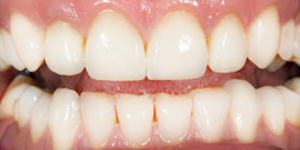
An ideal time when you would want or need a bridge, sometimes if the patient’s health isn’t such that they would be a candidate to place an implant, that’s an ideal situation.
Another ideal situation, I would say it’s like killing two birds with one stone, if you had a missing tooth and a bridge was one of your options to replace that missing tooth and both teeth on either side either already had a crown or possibly had root canals done to both but didn’t have a crown, then in a way you kill two birds with one stone.
Basically what that means is that by placing a bridge, you eliminate the space which is your one problem. And then the other problem is if you had two root canals done to the tooth in front and the tooth in back, those root canals become like an empty egg shell, they become very fragile and they need and require crowns on them or support.
So by placing a bridge, which is basically like having multiple crowns, the only difference really is that they’re splinted together, a bridge is something that will replace a missing tooth but it provides that support that the tooth needs and those two teeth will be less prone to fracture with a bridge in place.
So that’s a great option too but, ultimately, it’s just a good option to replace missing teeth. I think it’s a great option, it’s fixed, it’s cemented permanently in the mouth, it doesn’t come in and out like a partial denture would. So it’s a great treatment option.

























